For parents who want to calm down their kids during angry outbursts…
Follow This Step-by-Step Plan To Help Your Child Manage Their Anger And Control Their BIG Emotions
Stop your child’s anger outburst in seconds and teach them coping strategies to express their emotions in a healthy way
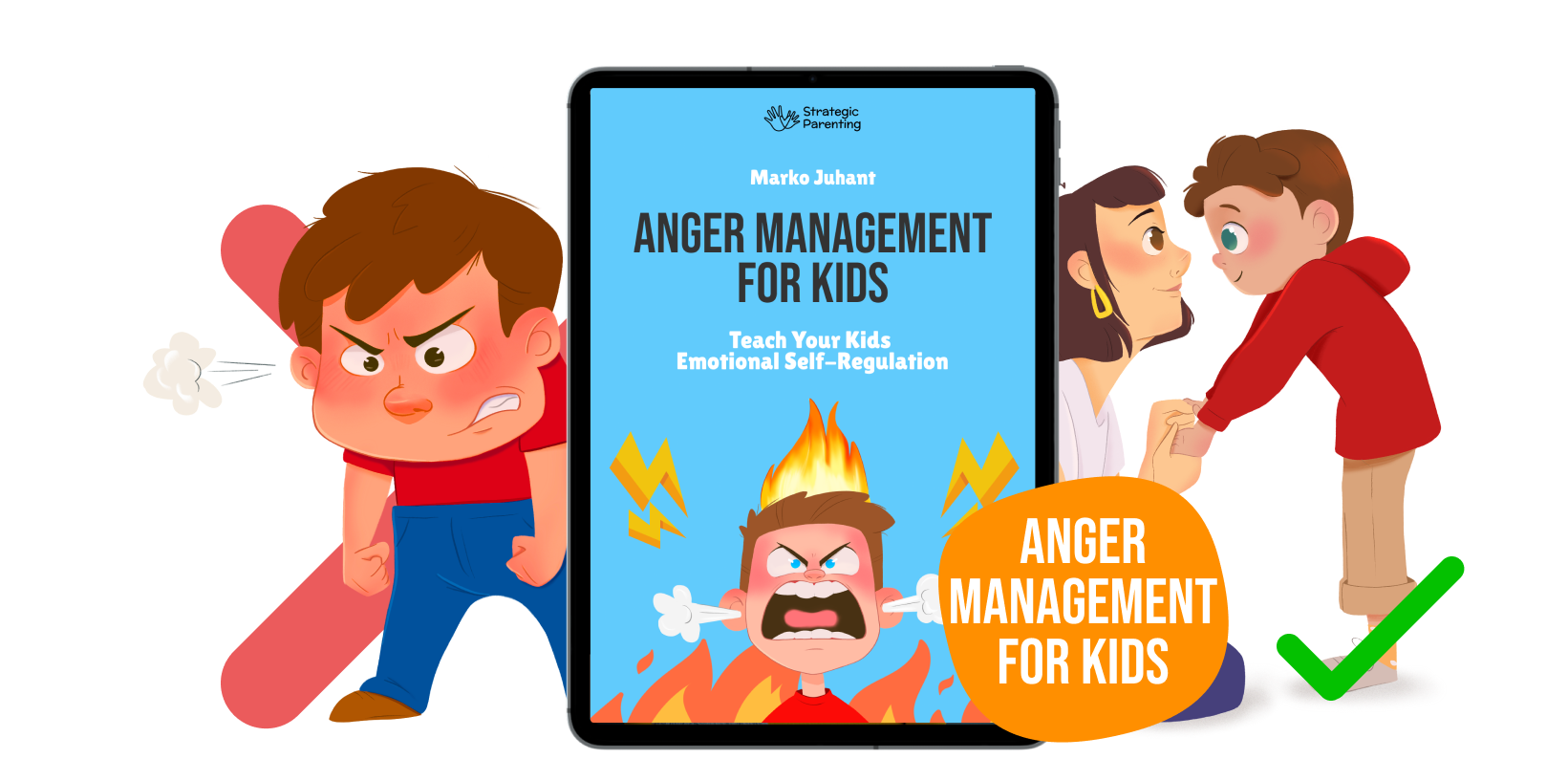



- Complete Emotional Regulation Action Plan: Raise emotionally intelligent children who are in touch with their feelings and know how to regulate their emotions
- Easy-to-read instructions with practical examples from everyday parenting situations
- Word-for-word scripts: Know exactly what to say to diffuse an intense situation and avoid emotional battles with your children
- Fun activities to teach your kids emotional self-regulation
- 90-day money-back guarantee (no questions asked) – go through all the materials at your own pace 100% risk-free
- Instant Lifetime Access to all the materials – download them, print them out or view them on your phone any time, anywhere
- 6 FREE Bonus Gifts (Total Value $115): E-Books, Workbooks & Printables for quick & easy implementation for busy parents

What is Anger Management for Kids?
Kids who don’t throw tantrums and who know how to calm themselves down do so because they’re good at regulating their emotions.
These kids know how to express their needs and emotions in a healthy way.
And they’re able to express themselves and negotiate conflicts without yelling, crying and kicking.
They may be naturally good at it, or they’ve unknowingly learned it by modelling their parents or other role-models in their lives.
But this isn’t just a “talent” that kids have or don’t have.
During my 40 years of working with kids of different ages, cultures and economic backgrounds, I soon realized it’s a skill they can learn and master.
And it’s never too late for that (though the earlier you teach them how to regulate their emotions, the easier your life will be).
And that’s exactly what Anger Management for Kids will help you achiveve.
You’ll be able to convert an angry and “explosive” child into a calm, smiling and kind child that knows how to intelligently master their emotions.
When Kids Don’t Know How to Manage Their Emotions, They Enter “The Anger Spiral“.
Instead of calming down, they’re just getting angrier and angrier.
They might start biting, hitting you, or slamming their doors (depending on how old they are).
And they will not stop until they’re simply physically too exhausted to keep going.
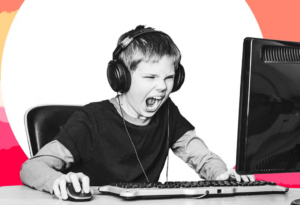
When you don’t know how to deal with your child’s anger, this can be very frustrating.
As a result, you might respond back with your own anger.
At this point, you might start yelling or issuing a punishment you later regret.
But Your Child Doesn’t WANT to be Angry.
When your child throws a tantrum, screams, yells, cries, kicks, hits, bites or runs away…
They do so because he or she doesn’t like something and they don’t know how else to deal with it.
They were not taught how to regulate (not suppress!) their emotions in the right way.
When something upsets them, they naturally feel a negative emotion.
And instead of calmly verbally expressing themselves, they throw a tantrum.
The tantrum itself makes them lose control and brings up even stronger emotions of anger.
If, in this moment, you don’t react in the proper way…
Then, they’ll get even angrier and more frustrated.
The problem is…
They Don’t Teach Emotional Regulation in School…
So the best way for your child to learn how to manage their angry emotions is if you teach them.
Now, going at it alone especially if no one else gave you the strategies and tools to do so can be overwhelming.
That’s why I developed a step-by-step action plan that will guide you through some of the best emotional regulation strategies for kids out there.
The plan includes a set of 28 strategies and aims to achieve three things:
- Equip you with strategies to stop angry outbursts in a peaceful manner without harming the relationship with your child.
- Boost your child’s patience with fun and playful activities. These are the activities your child will want to do precisely because they are fun and playful.
- Teach your child emotional self-regulation so they can manage their angry emotions on their own without “losing it”.
I’ve neatly packed these strategies in the Anger Management for Kids E-Book so you can apply them one by one without feeling overwhelmed.
Here’s What You’ll Experience After You Apply the Strategies from Anger Management for Kids:
- Know exactly how to calm down your child in seconds during angry outbursts.
- Two-hour tantrums shrinking down to two minutes (or disappearing completely).
- Enjoy morning and evening routines running much smoother – you’ll leave the house without loud arguments, and your kids will go to bed on time.
- Help your child communicate their disagreements, needs and wants without shouting, hitting, or crying.
- Go to bed feeling like the “Best Mom or Dad in the World” on a daily basis.
Sounds Too Good to Be True?
Here’s what other parents have to say about The Anger Management for Kids E-Book after they applied the strategies


“Our children had a huge lack of patience, and quick irritability even with basic things like toys or putting on shoes – if it doesn’t happen immediately they would get irritated in an instant, fighting and yelling constantly. They now understand that it is necessary to wait and try to control their emotions. They don’t get angry as much as before, for example, when putting on a shoe, but instead, they turn it into a joke. I also noticed that I speak more calmly myself and I stand by them. I feel more relaxed. You are great. Thank you! ????”


“I can tell there is more mutual kindness, calmness and compassionate conversation in our family. Above all, I learned how to listen to my daughter first and then later tell her my opinion. We talk more, come to an agreement much easier and also stick to the agreement, which before was not often the case. Your expertise is definitely useful to me and we are slowly putting it into practice in our everyday life.”


“My grandson’s biggest problems were severe tantrums and anger outbursts. We made the “anger catcher” with both of my grandsons, then we counted the numbers and played his favorite tune, which immediately calmed him down, it was very pleasant. The manual also gave me a lot to think about since I used to have a hard time controlling my anger. “

“This is fantastic! Our son was really struggling with anger issues at school and was coming home from school really upset and frustrated, but since he start using the worksheets, he learned to understand what actually triggers his anger and how to easier cope with his strong emotions.“

“It has been a godsend for our family. For parents, it can be so frustrating to feel powerless in the face of our child’s anger issues. But this has given us the tools we needed and we’ve seen a huge improvement. Everything became much calmer and less intense.”
Here’s Everything You’ll Receive With The Anger Management for Kids E-Book
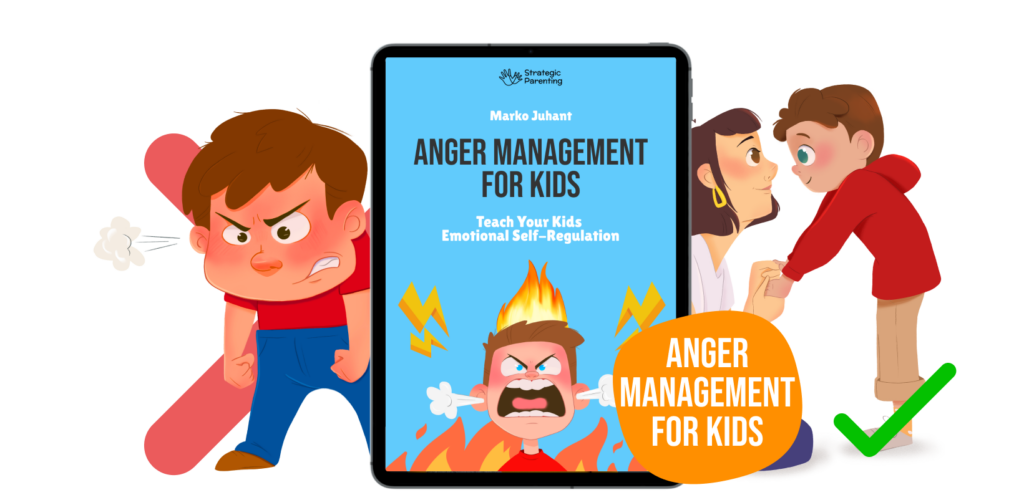
Chapter 1: Anger-Stoppers: Stop your child’s explosive outbursts in 2 minutes with non-violent, playful and empathetic techniques
When your child erupts in anger when they don’t get what they want, when they resist doing something, or when they are transitioning between activities…
They don’t hear what you have to say. When children are still young, their emotional part of the brain is much stronger than their rational part. That’s why simply telling them to “calm down” or repeating your instructions doesn’t work.
Instead, you need a set of techniques that tap into your child’s playful nature, help the evolve and develop their brains, and teach them emotional intelligence.
Here’s a sneak peek of what you’ll learn in the first chapter:
- A Scanning Questions Sequence to help your child detect the “hot” spot in their body and extinguish the heat.
- The Playful Emotional Regulation Technique for kids to express their feelings without having to say anything.
- A simple 3-step action plan to stop aggressive behavior in the moment.
- An unusual redirection technique to calm down your child in the middle of a meltdown… without making you lose control.
- A “Reset&Reconnect Plan” for those rare situations when you lose your patience and escalate the situation into a bigger conflict.
Once you start using Anger-Stoppers, you’ll quickly develop trust and positive authority with your kids.
You’ll become a guiding parent who serves as a role model – someone your kids are happy to cooperate with and talk to openly.
Chapter 2: Patience-Boosting Protocols: Prevent angry outbursts by boosting your child’s patience
Most kids “explode” when they are already tired…
When something has already frustrated them to the point where they’re losing patience.
That’s why you need a set of protocols that will keep your child in a positive mood throughout the day. This way, you’ll prevent countless anger outbursts in the first place.
Here are just a few of the protocols you’ll learn in the second chapter:
- A Peace in a Box protocol that will keep your house calm and peaceful. It’s also a fun project to work on with your child.
- A “disconnect to re-connect” protocol to charge your child’s patience batteries and keep them calm throughout the day.
- An anger-channelling protocol that lets your child cope with angry feelings in a healthy way without throwing a tantrum, crying, yelling, kicking, hitting or biting.
While the main purpose of “Patience-Boosters” and “Anger-Stoppers” is to prevent your child’s angry outbursts and to diffuse them when they do occur…
These same techniques and protocols are also designed in a way to help your child learn about their emotions.
This is an important foundation for the last, most important step.
Chapter 3: Emotional Self-Regulation Strategies: Your child calms down and keeps their cool on their own
If you don’t want your child to rely on you each time they feel their anger rising…
They need to learn how to cope with their BIG emotions on their own.
That’s why I’ve included tailored strategies and word-for-word scripts that help your child process their negative emotions and express them without “exploding”.
Here’s what you’ll learn in the last chapter:
- A self-reflection strategy for your child to reflect on their hurtful actions and learn from them so they don’t repeat them in the future.
- A word-for-word script to discover what’s really bothering your child so you can tackle the root cause of their anger.
- A Playful Mediative Strategy will make your child instantly more resistant to their negative emotions.
- A game-changing strategy that changes your child’s actions by tapping into and changing their thoughts.
Through this 3-step process, your child learns how to recognize their negative emotions, what triggers them, and how to regulate them on their own.
When something doesn’t go their way, they’ll know how to process their uncomfortable emotions.
And when they truly need to let their anger out, they’ll do so by telling you what’s bothering them or simply playing a game (depending on how old they are).
These techniques, protocols, and strategies work for any child, no matter their temperament.
PLUS 6 FREE Bonus Gifts: E-Book, Printables & Workbooks
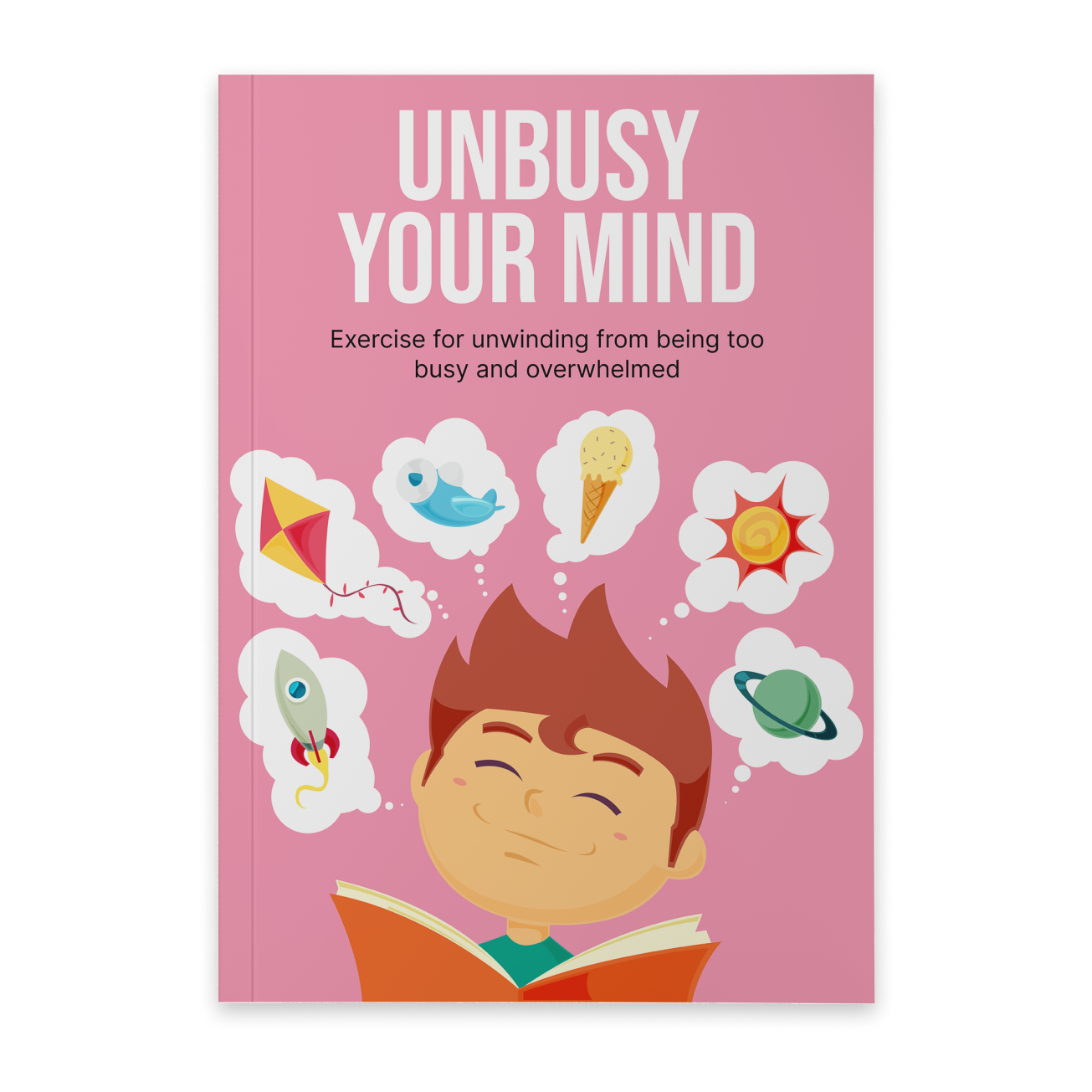
Workbook – Unbusy Your Mind: Exercise for unwinding your child from being too busy and overwhelmed
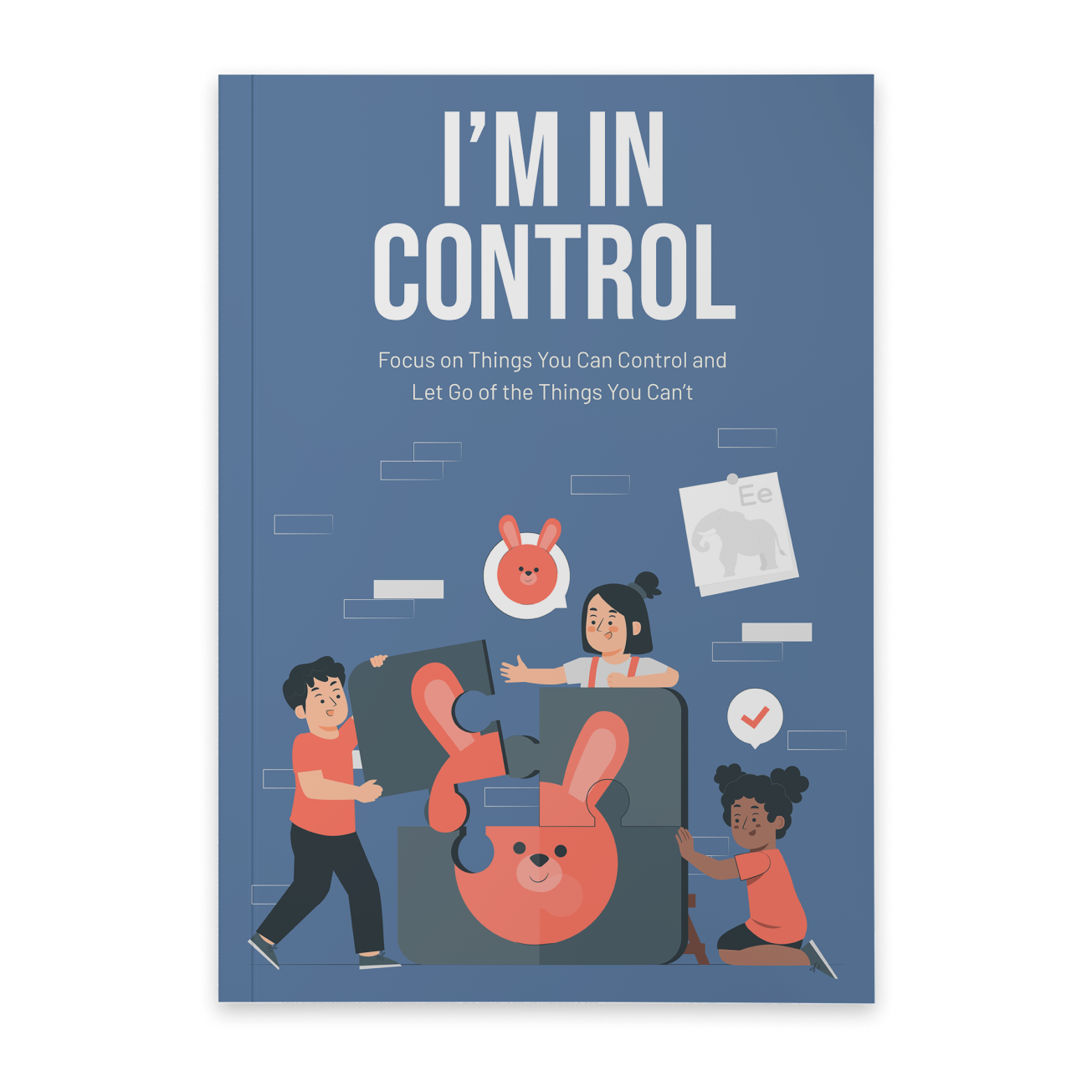
Poster – I’m in Control: Empower your Kid to Focus on Things They Can Control and Let Go of The Things They Can’t
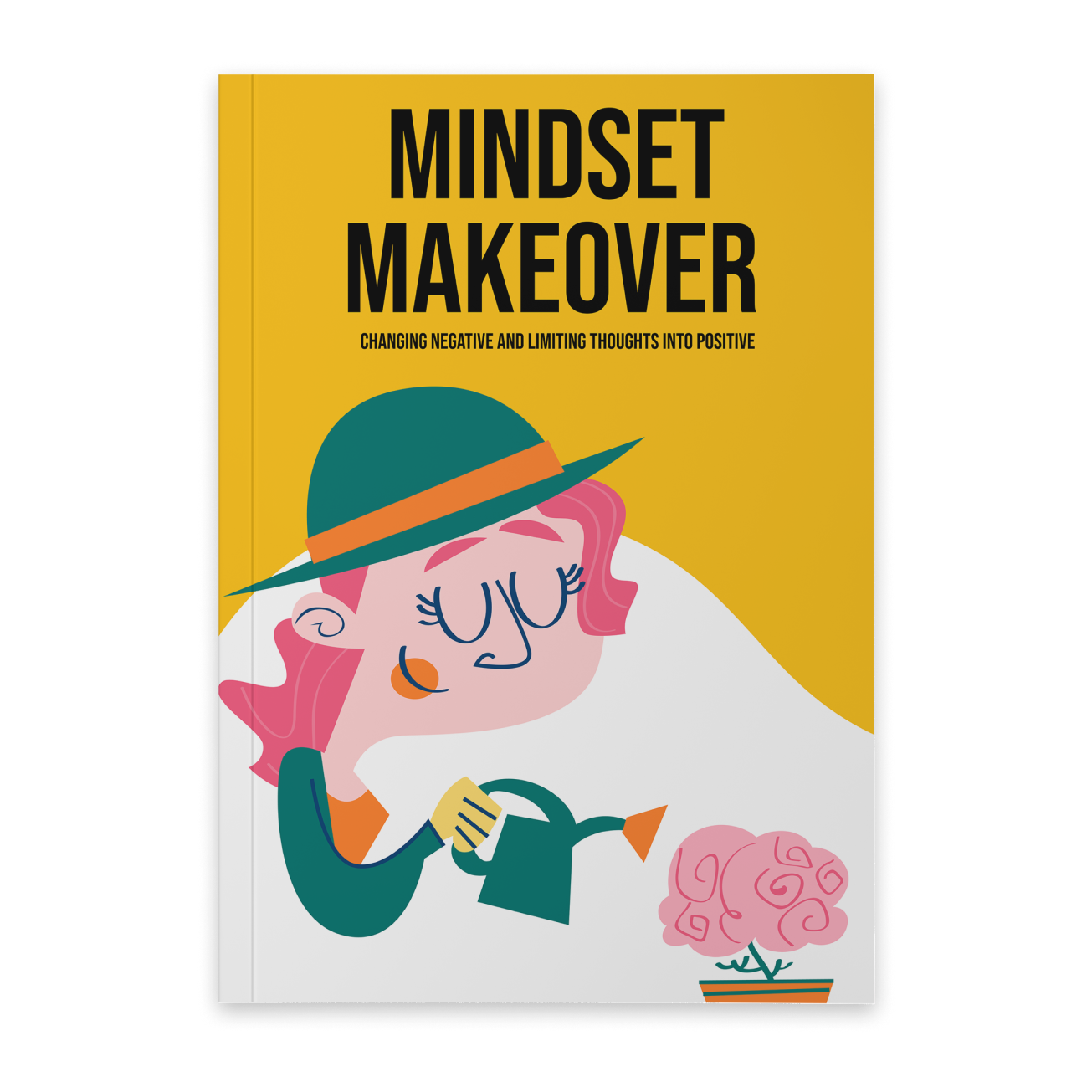
Worksheet – Mindset Makeover: Change Your Child’s Negative and Limiting Thoughts into Positive
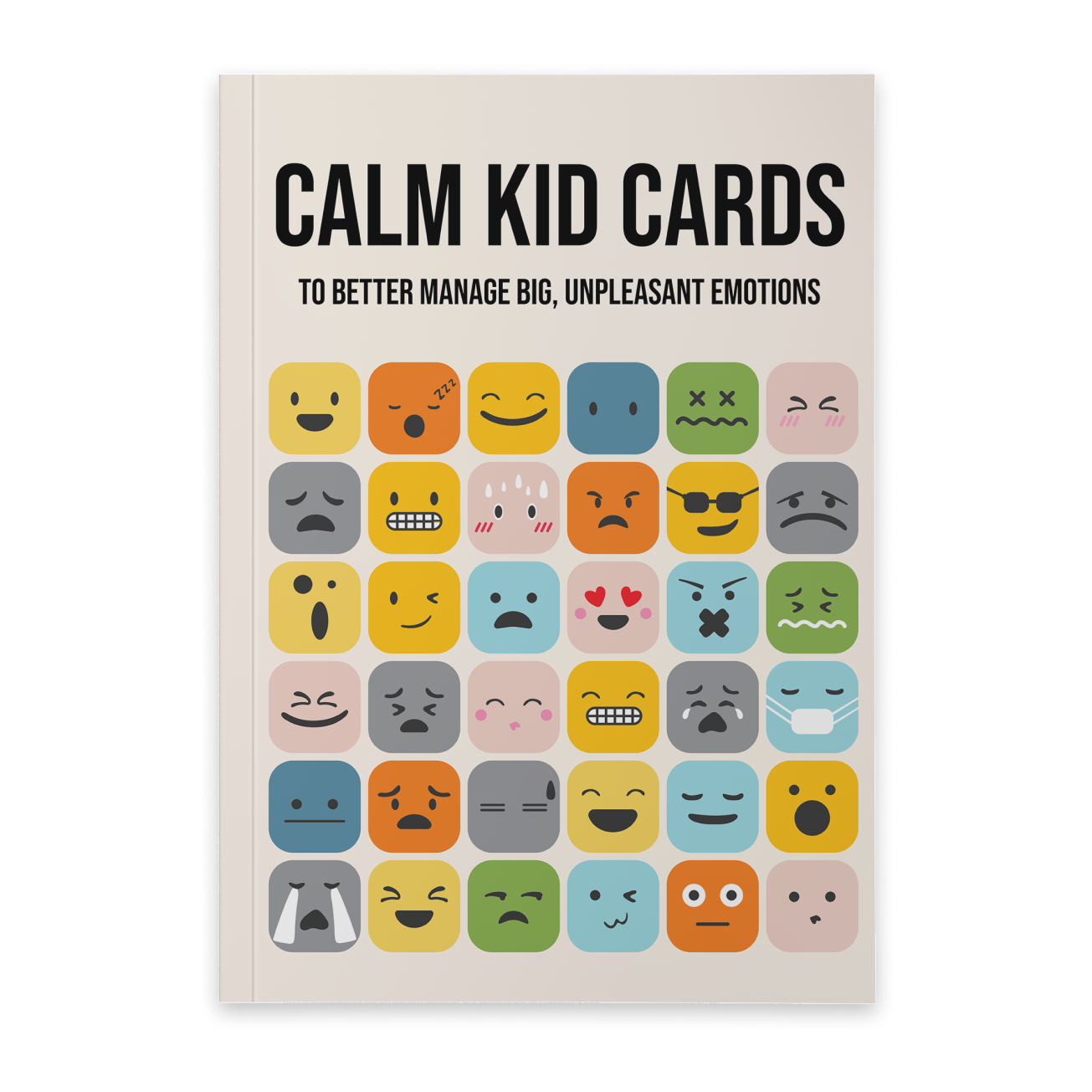
Printable – Calm Kid Cards: Cards to Better Manage Their Big, Unpleasant Emotions
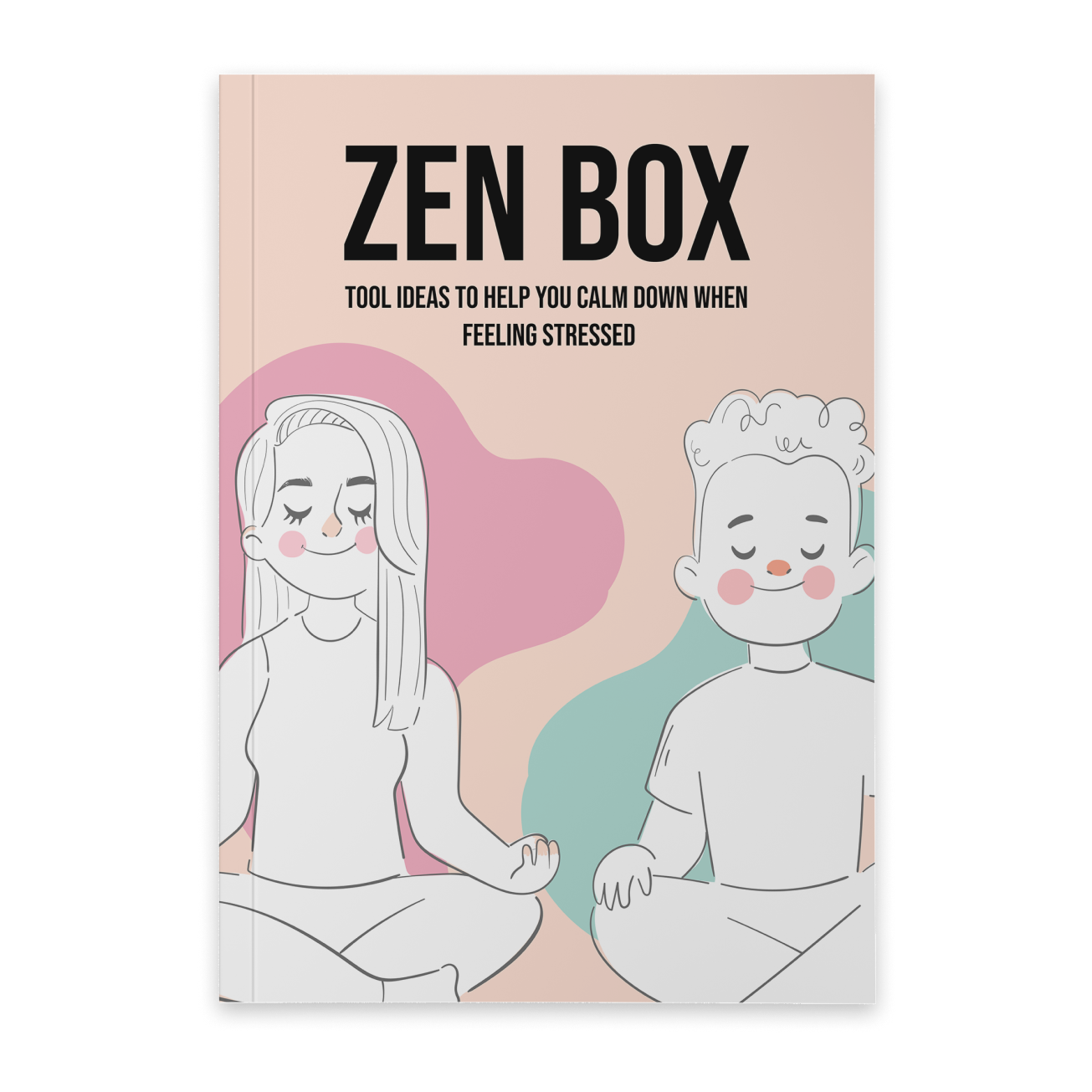
Worksheet – Zen Box: Selection of Tool Ideas for Helping Your Kid to Calm Down when Feeling Stressed
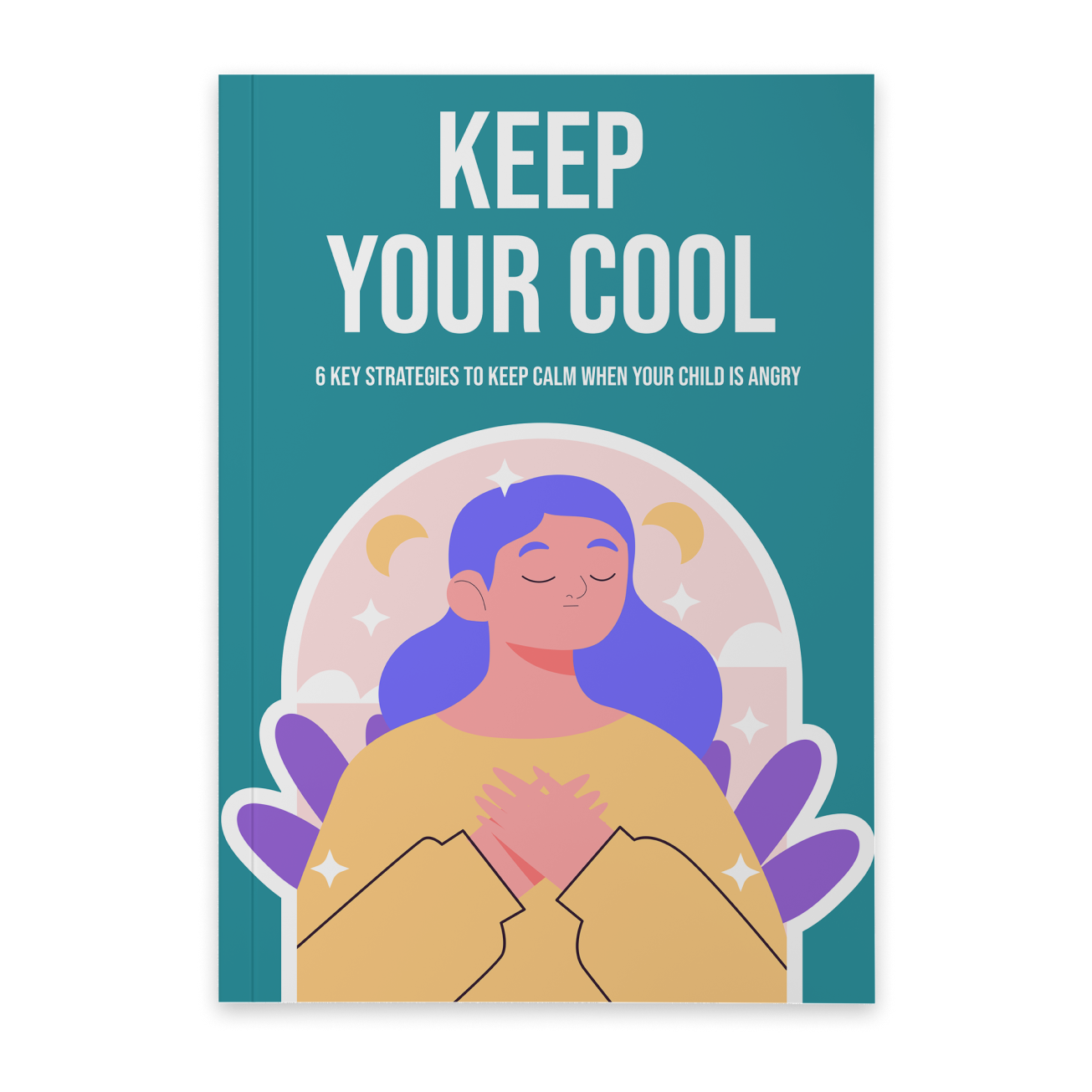
E-book – Keep Your Cool: 6 Key Strategies to Keep Calm When Your Child is Angry
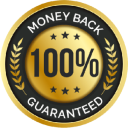
I’m Marko Juhant, and I’ve Been Working With Kids for the Past 40 Years.

I come from Slovenia (a small country in Europe), which is why you might not have heard of me yet.
I started out as a teacher on a school campus…
And quickly graduated to a principal position at a school for “challenging” kids.
Many of them had anger issues.
They became upset as soon as something didn’t go they wanted.
They were impulsive and even aggressive…
They wouldn’t listen to me…
But I Always Managed to Keep My Classes Under Control – Without Stress.
Because I knew exactly how to handle these situations…
Then, when other principals saw that I could help them as well, they invited me to host workshops for teachers and parents at their schools.
Right now, I do about 500 workshops every year, where I help teachers and parents with their unique challenges – even though I’m in my 60s.

When parents at workshops started asking me to give them something they could read at home, I started writing books.
I ended up writing 16 parenting books, most of which topped the national bestseller lists in Slovenia and competed with titles like Harry Potter.

Over the past 40 years, more than 100,000 parents and teachers read my books or listened to my lectures.
Which is quite a few, since my country Slovenia only has about 800,000 parents.

This Created a Ripple Effect Throughout Europe.
All of a sudden, journalists from Croatia, Italy, Austria, Germany and Switzerland started interviewing me, and parents and teachers from all over Europe started reaching out to me for help.
I wanted to help – so I learned new languages just to be able to share my knowledge with them.
Over the years, I also worked with over 1,000 European families 1on1 that came to me as “their light at the end of the tunnel”.
I came into their home, worked with the parents and children for a week, and solved their challenges.
Here’s How the Emotional Regulation Action Plan Was Born…
I first discovered the Emotional Regulation Action Plan because of my deep interest in children’s psychology, which guided me throughout my career.
I started testing the techniques, protocols and strategies in my classroom to see which were most effective, in what order should I teach them to children, and how should I teach them so they learn them without resistance.
I continued developing them while working with thousands of families across Slovenia and Europe for over 40 years.
I spent thousands of hours learning from my mentors, reading all sorts of different books on parenting, psychology, and life.
I tested thousands of different approaches to see what works and what doesn’t.
Over time, I developed my own Emotional Regulation toolbox that helped me PREDICTABLY and CONSISTENTLY get children to understand their feelings and manage their anger effectively.
And today, I am sharing them with you in The Anger Management for Kids E-Book.
Here’s What Other Parents Say…


“My grandson’s biggest problems were severe tantrums and anger outbursts. We made the “anger catcher” with both of my grandsons, then we counted the numbers and played his favorite tune, which immediately calmed him down, it was very pleasant. The manual also gave me a lot to think about since I used to have a hard time controlling my anger. “


“I can tell there is more mutual kindness, calmness and compassionate conversation in our family. Above all, I learned how to listen to my daughter first and then later tell her my opinion. We talk more, come to an agreement much easier and also stick to the agreement, which before was not often the case. Your expertise is definitely useful to me and we are slowly putting it into practice in our everyday life.”


“Our children had a huge lack of patience, and quick irritability even with basic things like toys or putting on shoes – if it doesn’t happen immediately they would get irritated in an instant, fighting and yelling constantly. They now understand that it is necessary to wait and try to control their emotions. They don’t get angry as much as before, for example, when putting on a shoe, but instead, they turn it into a joke. I also noticed that I speak more calmly myself and I stand by them. I feel more relaxed. You are great. Thank you! ????”

“It has been a godsend for our family. For parents, it can be so frustrating to feel powerless in the face of our child’s anger issues. But this has given us the tools we needed and we’ve seen a huge improvement. Everything became much calmer and less intense.”

“This is fantastic! Our son was really struggling with anger issues at school and was coming home from school really upset and frustrated, but since he start using the worksheets, he learned to understand what actually triggers his anger and how to easier cope with his strong emotions.“
Less Than The Cost Of A Single Therapy Session…
A 1-hour session with a child psychologist or counselor costs around $150-$200 per hour on average.
And that’s for a SINGLE session. With no guarantee that the counselor’s approach works for your specific child and situation.
If you booked 10 sessions, you’d easily spend $1,500 or more…
With the Anger Management for Kids E-Book, it would be reasonable to charge even a tenth of that, that’s $150.
But I don’t want the cost to stop any parent from getting the help they need with their family. That’s why I didn’t price my online programs and courses at $150, $100 or even at $50.
You can try it out, 100% risk-free for just $9.90. This just about covers my costs.
And I believe it’s more than a fair price for something that will bring you and your kids lasting happiness, joy and a beautiful childhood that you all deserve.
Many of my customers even said that the Emotional Regulation Action Plan in the book was worth far more than the cost.
Read the Whole Anger Management for Kids E-Book 100% Risk-Free.
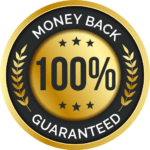
I want you to read the whole e-book completely risk free… not just for a day, a week, or a month, but for whole ninety days, so you can go through it at your own pace.
If, for whatever other reason you’re not 100% satisfied with the e-book…
If it doesn’t help your child manage their anger…
Then I don’t want you to have to pay for it.
Simply send me and e-mail to [email protected] any time within 90 days of your purchase and my team will return your full investment. No questions asked.
Plus, you get to keep the e-book – it’s on me.
Get Instant Access to:
The Anger Management For Kids E-Book

- Complete Emotional Regulation Action Plan: Raise emotionally intelligent children who are in touch with their feelings and know how to regulate their emotions.
- 11 Anger-Stoppers: Stop your child’s explosive outbursts in seconds.
- 7 Patience-Boosting Protocols: Prevent angry outbursts by boosting your child’s patience.
- 11 Emotional Self-Regulation Strategies your child can use on their own to calm down without you even knowing they were getting angry.
- Word-for-word scripts you can rely on to instantly diffuse a stressful situation and avoid emotional battles.
- 90-day money-back guarantee (no questions asked) – go through all the materials at your own pace 100% risk-free.
- Instant Lifetime Access to all the materials – download them, print them or view them on your phone any time, anywhere
- 6 FREE GIFTS (Total Value $132)

Frequently Asked Questions
Before I answer this question, let me ask you this first: how much time would you SAVE if you wouldn’t have to deal with your child’s angry outbursts?
If it’s a significant amount of time (and stress!), then I think you and I both know what you need to do.
The manual will take you less than an hour to read and then you’ll be able to implement the strategies through fun activities with your child.
Now, if you’re about to go on a 10-day vacation in the middle of the challenge with no access to your email… that’s not really a problem either. The materials will wait for you until you return, just make sure you get them now before we increase the price.
Plus, you have a whole 14 days to try the kit 100% risk-free.
I’ve been developing and using these tools for over 40 years now. Much of my work has been focused specifically on kids with various disorders because I know that being a parent in this case can be particularly challenging.
The Emotional Regulation Action Plan has been tried and tested on thousands of kids with ADHD, Autism, Anxiety and other disorders who are particularly sensitive. I’ve made sure that it’s bulletproof and working flawlessly in such situations.
My recommendation is to give it a try. You have nothing to lose and I’m convinced you’ll be blown away by how effective they are for your situation.
I get this question all the time. And my answer is always the same.
I’ve been studying this subject for over 40 years now. I wrote 16 books about it and have personally tested the tools on thousands and thousands of kids.
Trust me when I say this – by now I’ve made all my materials so bulletproof that I have yet to see them fail.
You’ll be surprised by how well and how quickly this plan will work for you and your child. But don’t take my word for it – see for yourself. Try the kit, and if it doesn’t absolutely exceed your expectations, e-mail my team, and they’ll return your full investment – no questions asked.
You will receive all the material in a digital format via email.
Since you will receive materials via email, you can of course access them anytime and anywhere you wish.
Once you receive the materials, they are yours to keep. You can also print them out and save them in a physical form or make visual reminders out of them to help you stay consistent.
The contents of the plan are intended for parenting of children of all ages. These are proven parenting techniques that work way better than yelling, regardless of the age of the children. Some also work with adults!
I totally agree with you. Your children are different from all others. And this is really not a bad thing! It just means that they are predictable in some way and that the methods will work for them as they work for most other children.
The parenting techniques I will share with you are based on the psychological patterns and responses of many of the children I have worked with and observed in my 40 year career. Regardless of their personality and special characteristics, some things remain the same and work. They are humane. In the nature of all of us.
Therefore, I am sure that you will also learn something new, that you will better understand your child and that you will gain new educational approaches and techniques that will make parenting easier and more successful.
Of course! You can order it and then e-mail us at [email protected] to transfer ownership to the person you want to gift it to.
If you are not satisfied with the product, please notify us at [email protected] within 14 days of purchase and get your money back.
Please just review and actually try to use the content in practice.








